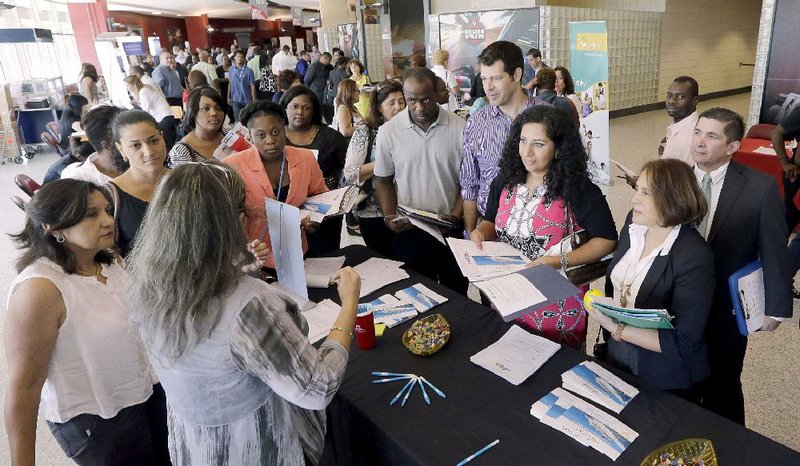WASHINGTON -- The number of Americans seeking unemployment aid rose slightly last week, yet remained at a low level consistent with a solid job market.
The Labor Department said Thursday that weekly unemployment applications climbed 4,000 to a seasonally adjusted 277,000. The four-week average, a less volatile measure, increased 5,500 to 271,500.
Claims are "still close to their lowest level in several decades, and that's a good sign," said Ryan Wang, an economist at HSBC Securities USA Inc. in New York. "It's a stable, low level of claims."
Applications, which are a proxy for layoffs, are near the lowest levels in 15 years. Two weeks ago, the four-week average dropped to its lowest point since April 2000. That is a sign that employers are confident enough in the economy's future growth to hold on to workers.
The number of people receiving aid fell 24,000 to 2.25 million. That is almost 11 percent below the level one year ago. Many former recipients have found jobs, while others have exhausted their benefits.
The sharp fall in layoffs in the past two years means Americans are enjoying solid job security. Hiring also has picked up and has continued at a steady pace.
In July, employers added a net 215,000 jobs, and the unemployment rate remained at a seven-year low of 5.3 percent.
The economy has generated 5.6 million jobs in the past two years, putting more paychecks into Americans' hands. That is increasing spending and helping the economy to grow. But the steady job gains and falling unemployment rate have yet to improve wages.
Average hourly pay increased just 2.1 percent in July from 12 months earlier, far below the 3.5 percent to 4 percent gains that have historically occurred in healthy economies.
One trend holding back pay has been sluggish increases in worker productivity. Productivity measures output per hour worked and is a gauge of efficiency.
It has expanded just 0.3 percent in the past year, far below the 2.2 percent average annual gain for the past six decades.
There was nothing unusual in the data and no states were estimated last week, the Labor Department said.
Initial jobless claims reflect weekly firings and typically decrease before job growth can accelerate. Many layoffs now reflect company -- or industry-specific causes, such as cost-cutting or business restructuring.
Kraft Heinz Co., the food company that counts Warren Buffett's Berkshire Hathaway Inc. as its largest shareholder, said Aug. 12 that it would eliminate about 2,500 jobs in the U.S. and Canada under the new management. The cuts include about 700 employees in Northfield, Ill., the longtime home of the Kraft operation.
Federal Reserve policymakers are watching measures of labor market health such as unemployment claims as they try to time an increase in their benchmark interest rate for the first time since 2006.
Minutes released Wednesday from their July meeting showed officials said that while conditions for raising interest rates were approaching, they saw more room for labor-market healing and need more confidence that inflation is moving toward their goal.
Information for this article was contributed by Christopher S. Rugaber of The Associated Press and by Victoria Stilwell and Kristy Scheuble of Bloomberg News.
Business on 08/21/2015
